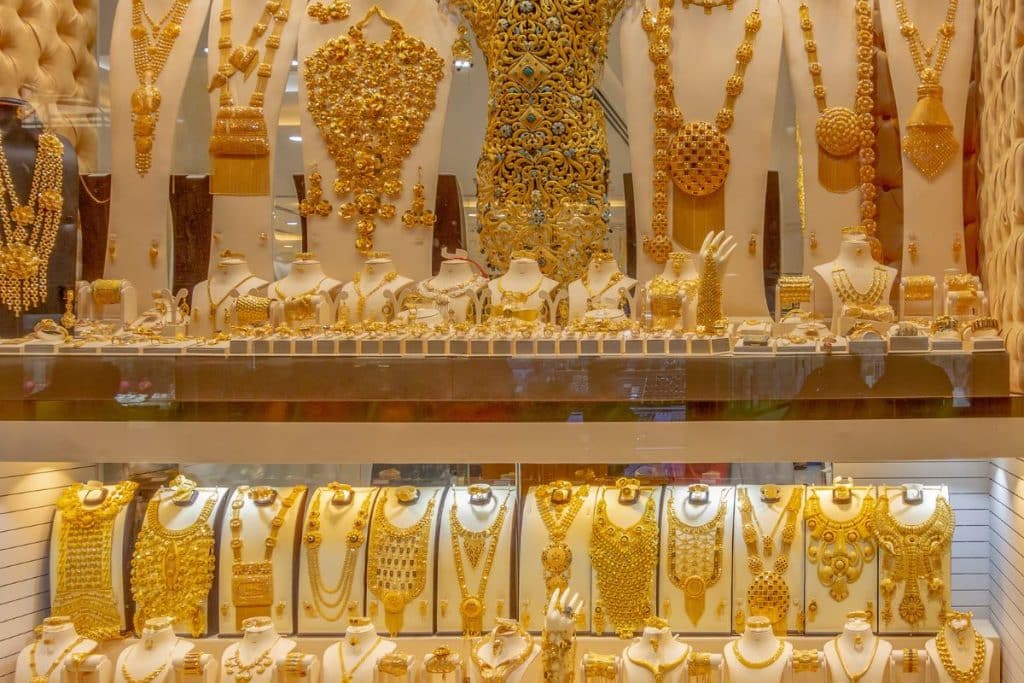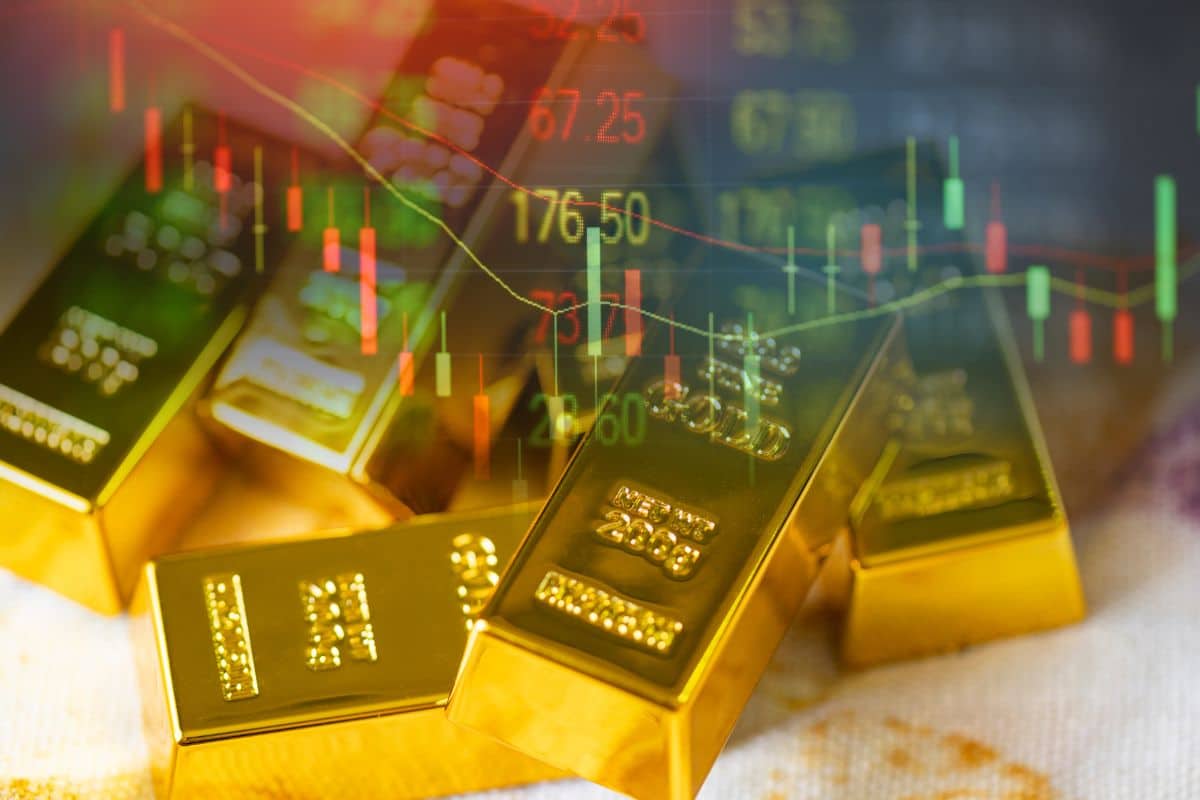With prices rising across economies worldwide, investors are seeking assets that can help shelter their wealth during high inflation.
Gold has historically performed well under such conditions and continues drawing interest from various market participants, suggesting its enduring role as a portfolio diversifier.
Due to these continuing economic uncertainties and global markets fluctuations, financial experts are advocating for inclusion of gold in investment portfolios, citing its potential as a long-term store of value and hedge against volatility.
Gold holds appeal as hedge amid inflation concerns
“Last month, gold reached new all-time highs, supported by increased demand from central banks and OTC demand, indicating strong market confidence. The metal’s performance across various currencies has been notably strong year-to-date, reinforcing its reputation as a reliable hedge against volatility and economic fluctuations,” Andrew Naylor, Head of Middle East and Public Policy at World Gold Council (WGC) told Arabian Business, adding that all kinds of investors have “turned to gold” as store of value and hedge against risk and uncertainty.
When asked about the factors currently influencing gold prices, WGC’s Naylor explained that the metal’s prices are influenced by “economic indicators, market dynamics, and geopolitical developments.”
Factors like persistent consumer price increases and geopolitical risks enhance gold’s “safe-haven” appeal, he said. WGC’s research shows the metal maintains value when currencies weaken, helping preserve purchasing power.
“Our Gold Return Attribution Model (GRAM) points to significant influences such as central bank buying, strong retail consumption in Asian markets and OTC market activity as key drivers of recent price movements,” he said, adding the “potential for stagflation” boosts gold’s status as a “protective asset.”
While market fluctuations are normal, gold’s fundamentals remain sound. Demand from jewellery to technology supports unique supply-and-demand dynamics, and with low correlation to other assets, limited supply and liquidity, gold can serve as a counterweight in investment portfolios during periods of economic uncertainty.

Is it a good time to invest in gold right now?
“At this moment, the gold price has somewhat stabilised at around $75,000 per kilo, with several price increases observed in recent weeks. However, this doesn’t necessarily imply that the best moment to invest in gold in 2024 has passed. Allocating a portion of a company’s or individual’s net worth into gold, typically around 5-10 percent, remains consistently advantageous due to its long-term growth potential,” Bas Kooijman, CEO and Asset Manager of DHF Capital S.A, told Arabian Business.
According to Koojiman, this year has seen considerable movement for the gold industry.
While many of the price increases indicate profitability may have peaked, it makes sense to wait for a clear reduction in price for a preferable time to buy, he said, adding that the frequent alterations in CFD market graphics usually exceed fluctuations for gold’s actual cost, especially for orders that are not in bulk quantity.
Still, the divergence between the two prices is reasonably minor. Trying to determine the aspects that are currently affecting the price of gold, or do at any moment, is “like navigating a constantly changing maze without a guide,” he added.
Rising prices, increasing interest rates, economic markers such as GDP growth, and naturally, the inversely associated connection involving the US dollar and gold all influence the cost of this highly “sought-after” precious material, he said.
“Therefore, it’s always advisable to invest when aiming to rebalance or diversify your portfolio, allocating a small stake to physical gold with the understanding that it’s held with a long-term vision for several years. Over time, precious metals tend to appreciate naturally as a secure component of your portfolio, protecting against global uncertainties such as political instability or geopolitical tension,” he said.
Koojiman further explained that gold also “tends to rise” when stock markets and other assets falter.
“While it may not be the ideal moment to invest, in general, it’s always the right time. For investors or institutions constructing or readjusting portfolios, investing in gold between two to four times per year can facilitate wealth creation and preservation,” he said.
Echoing his sentiment, WGC’s Naylor said while gold has traditionally been valued for its reliability and ability to protect wealth during times of economic disturbance, current issues like ongoing rising prices and geopolitical ambiguities are noticeable, enhancing gold’s draw as an element of a varied investment approach.
“We have continued to witness gold’s resilience and growing global demand this month, suggesting its continued relevance in the context of market volatility and economic shifts. We also believe gold is a strategic, long term asset providing protection and wealth growth over the long term,” he said.
However, gold – which has historically been seen as a protective asset during times of high inflation and research – according to Naylor shows that in periods of considerable inflation particularly, gold is one of the best inflation guards.
“It tends to retain its value because it is priced globally in US dollars, a currency that might depreciate during inflationary periods, making gold more expensive in dollar terms and therefore preserving its purchasing power,” he said adding that the metal’s worth increases often during inflation.
This is because availability is constrained, and it is viewed as a firm store of value when the real value of currency weakens, he said, adding that recent trends in the gold market show substantial demand from institutional investors and central banks, which tend to amplify their gold reserves as a hedge against risk (including currency risk) and economic vagueness.
“Specifically, the demand for gold has been bolstered by the Eastern markets. This portrays golds ongoing role as a hedge against economic uncertainty marked by the current high inflation environment and risks of stagflation. This sustained demand can contribute to maintaining or increasing gold’s price over time. Moreover, gold’s low correlation with other assets makes it a useful diversifier in an investment portfolio, increasing risk-adjusted returns,” he said.

Best types of gold investments for different investor profiles
According to Naylor, there are many different options when investing in gold, however, the choice of product depends on personal financial aims and involvement in the markets.
“Gold bullion is a tangible asset that requires considerations for storage and insurance. Jewellery is an adornment but also has investment potential. Gold stocks provide an exposure to the gold price but performance is tied to the companies’ underlying business. Gold ETFs are traded on exchanges, and can be physically backed by gold bullion,” he said.
However, Koojiman advises first-time investors to start small.
“As the age old adage goes, slow and steady wins the race. Thus, start small. It’s always best to buy bullion bars in small quantities from a reputable provider such as PAMP – but it’s also possible to buy bullion online and have it saved in a secured vault,” he said.
ETFs are more suited for frequent trading of gold rather than long-term holding due to high daily swap charges on leveraged products, he said, adding that stocks in companies associated with gold sit within the category of equities. This is consistently a sound strategy that can assist investors with perspectives favourable towards gold, he explained.
‘Market volatility’, ‘allocated gold’ – some risks for investors to be aware of
Neverthelses, as with precious metals and stones, there are few risks associated with these assets, Naylor said adding it is “important” to know whether the gold has been allocated or not.
“Allocated gold is where the owner has legal title to specific and identifiable bars and coins. Gold’s fundamentals are strong, and the diversity of demand from different sectors of the economy and geographies that underpin gold’s uniqueness,” he said, however because of its diverse global demand, gold tends to perform differently than other assets during economic changes.
“It performs differently to other assets making it a useful diversifier and risk mitigating asset. It is also highly liquid, with $145bn traded every day on average,” he said.
When asked what percentage of a portfolio is typically recommended for gold diversification, Naylor explained that most investors allocate 5-15 percent of their portfolio to gold as this provides diversification without over-focusing on one asset class.
The specific allocation depends on individual risk tolerance, goals and the broader economy, he said, adding that investors dynamically adjust their gold holdings as part of managing risk and capitalising on opportunities.
“Due to its liquidity, gold is a flexible and accessible choice during a market expansion or a recession. Investors may adjust their gold holdings as part of a strategic approach to asset allocation, responding to changes in market outlook or economic scenarios. For example, during periods of increased inflationary pressure or geopolitical instability, increasing gold exposure might be considered to protect against currency devaluation and economic uncertainty,” he said.









